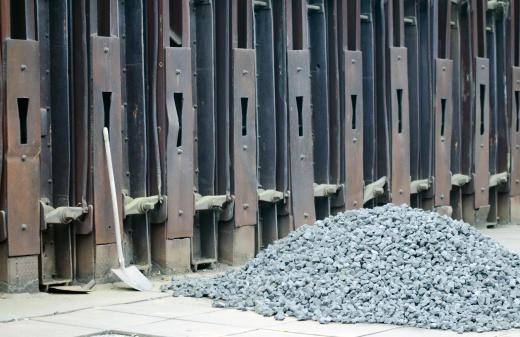At AboutMechanics, we're committed to delivering accurate, trustworthy information. Our expert-authored content is rigorously fact-checked and sourced from credible authorities. Discover how we uphold the highest standards in providing you with reliable knowledge.
What Is Lead Smelting?
Lead smelting uses heat and chemical reactions to free lead from the compounds it is bound to in lead ores. The mineral galena — lead sulfide (PbS) — is one of the primary ores used in the smelting process. First, the lead is oxidized, releasing it from the sulfur and binding it to oxygen, forming lead oxide (PbO). Then, the oxygen is pulled from the lead in a high temperature, reducing environment. This is done in the presence of carbon so that the oxygen combines with the carbon, leaving pure molten lead as the final product.
Archeological evidence of lead smelting dates back over 8,000 years. The earliest known smelting occurred in what is modern-day Turkey. Lead pipe has been discovered in archeological sites in Mesopotamia, ancient Persia and Egypt. The Romans used lead extensively for plumbing. Primitive lead smelting hearths and furnaces were used to extract lead from galena and were developed in many areas of the world where the ore was found.

Ancient smelting was done using loads of lead ore and charcoal in outdoor hearths and furnaces. High-grade ores such as galena had to be used to recover sufficient quantities of lead. The pure, molten lead flowed from the smelters, forming slabs of raw lead for later use. This process was used for thousands of years and was possible due to the relatively low temperatures needed for lead smelting. Primitive smelting sites are still a source of lead pollution, as no efforts were made to protect the soil from contamination.
Modern smelting methods use a controlled environment to maximize lead recovery and minimize pollution. Lead smelting is done using blast and rotary furnaces or a combination of both types. The lead ores are mixed with coke, limestone, and other materials and reduced in the furnace. Heavy molten lead sinks to the bottom of the furnace, while other substances form lighter layers above the lead. Much of the pollution and waste is controlled, as many of the by-products of lead smelting are captured for later recovery and use.
Recovery of lead from recycled products is done using secondary lead smelting. Old pipes, batteries and other materials containing lead are used in place of lead ores. The process of recovery from recycled materials is similar to lead smelting from ore. Heat and carbon containing compounds such as coke or charcoal are used in the reduction of lead oxides. Sulfur and other waste products are captured using lime, soda ash or similar materials.
AS FEATURED ON:
AS FEATURED ON:











Discussion Comments
We have a rotary furnace for smelting and recycling lead scrap. Now we want to smelt Lead ore of 50-55 percent Pb content in the same furnace, Can we do this and what will be the process, charge mix and yield in comparison to Pb percent in Galena?
Post your comments